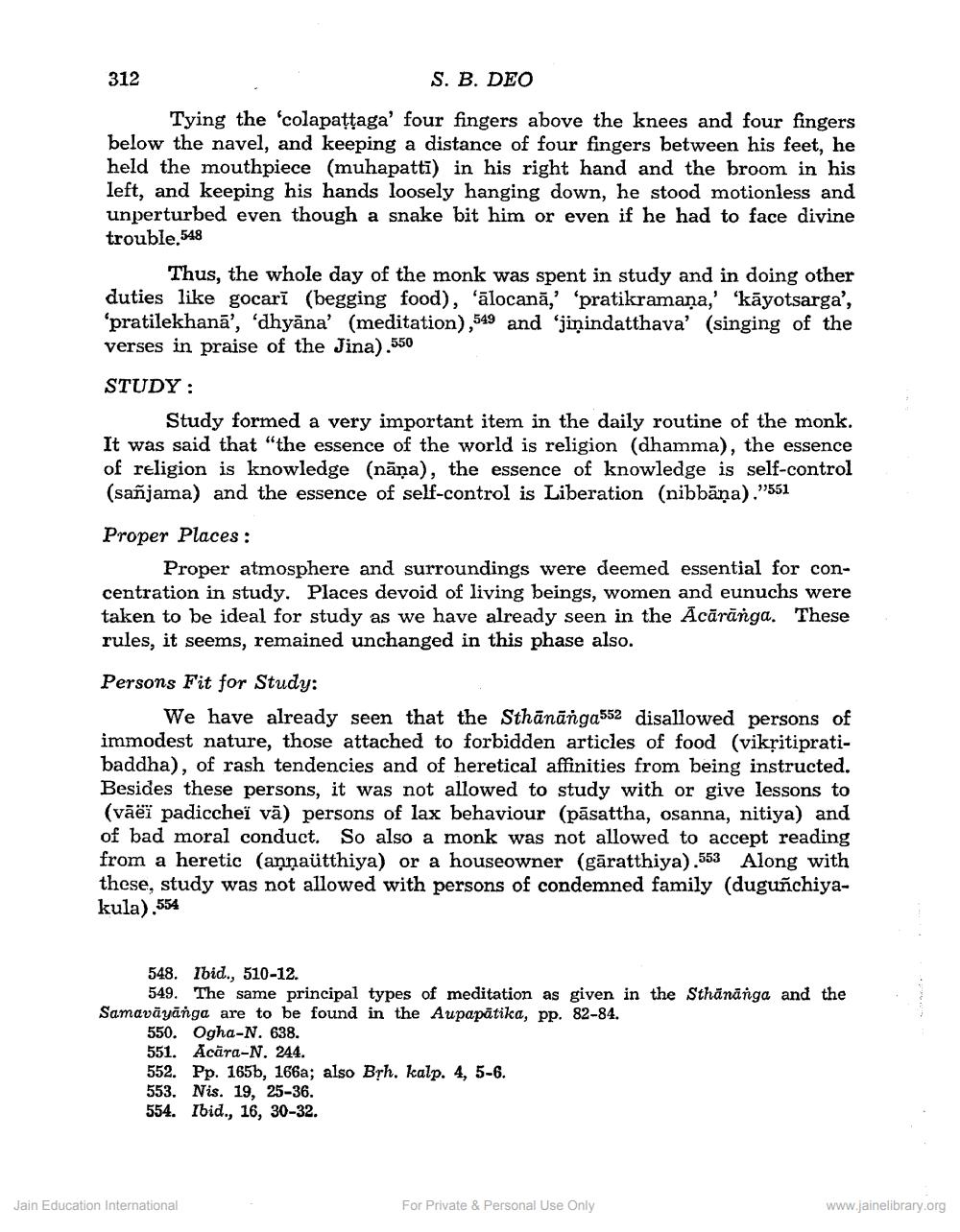________________
312
S. B. DEO
Tying the 'colapattaga' four fingers above the knees and four fingers below the navel, and keeping a distance of four fingers between his feet, he held the mouthpiece (muhapatti) in his right hand and the broom in his left, and keeping his hands loosely hanging down, he stood motionless and unperturbed even though a snake bit him or even if he had to face divine trouble,548
Thus, the whole day of the monk was spent in study and in doing other duties like gocarī (begging food), 'alocana,' 'pratikramaņa,' 'kāyotsarga', 'pratilekhana', 'dhyana' (meditation),549 and 'jinindatthava' (singing of the verses in praise of the Jina),550
STUDY:
Study formed a very important item in the daily routine of the monk. It was said that "the essence of the world is religion (dhamma), the essence of religion is knowledge (näna), the essence of knowledge is self-control (sañjama) and the essence of self-control is Liberation (nibbāņa)."551
Proper Places:
Proper atmosphere and surroundings were deemed essential for concentration in study. Places devoid of living beings, women and eunuchs were taken to be ideal for study as we have already seen in the Acaranga. These rules, it seems, remained unchanged in this phase also.
Persons Fit for Study:
We have already seen that the Sthänäñga disallowed persons of immodest nature, those attached to forbidden articles of food (vikritipratibaddha), of rash tendencies and of heretical affinities from being instructed. Besides these persons, it was not allowed to study with or give lessons to (väëï padiccheï vā) persons of lax behaviour (päsattha, osanna, nitiya) and of bad moral conduct. So also a monk was not allowed to accept reading from a heretic (annaütthiya) or a houseowner (gäratthiya),553 Along with these, study was not allowed with persons of condemned family (dugufichiyakula),554
548. Ibid., 510-12.
549. The same principal types of meditation as given in the Sthānanga and the Samavāyānga are to be found in the Aupapātika, pp. 82-84.
550. Ogha-N. 638.
551. Acara-N. 244.
552. Pp. 165b, 166a; also Bṛh. kalp. 4, 5-6.
553. Nis. 19, 25-36.
554. Ibid., 16, 30-32.
Jain Education International
For Private & Personal Use Only
www.jainelibrary.org




